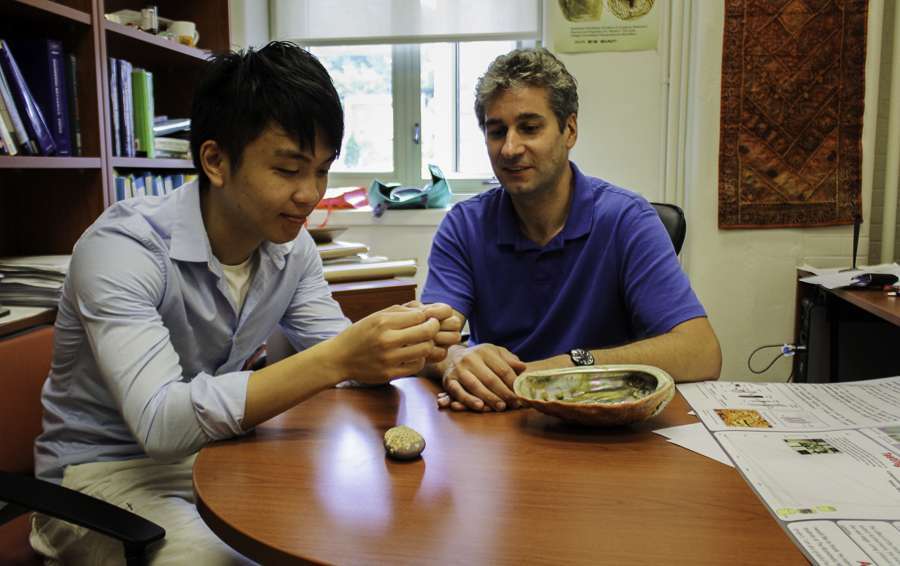Mankind has accomplished some pretty big feats over the ages. As a species, we’ve managed to develop and improve communication in the form of countless intricately complicated languages, formed cooperative governing structures that are based on equality and freedom, and are unremittingly pushing back the boundaries of technology on a daily basis. Birds fly, and so can we. Fish swim, but so what, we’ve got nuclear-powered submarines that can circumnavigate the globe. Heck, we’ve built buildings so tall that if Zeus did exist, he’d be submitting an application to purchase the penthouse suite.
We’ve conquered flight, put a man on the moon, developed disease-fighting drugs, and have succeeded in harnessing energy from the sun and wind. It’s hard to doubt, we’re a pretty intelligent species.
Yet to the ordinary person, it may come as somewhat far-fetched that the humpback whale has played a significant role in the design of wind turbines. Or that the Zimbabwean termite mount is currently serving as a model of sustainable building architecture. It may be easier to start with something seemingly more plausible, for example, Speedo’s sharkskin inspired swimsuits that allowed swimmers to break 13 world records at the Sidney 2000 Summer Olympics. As a matter of fact, the hydrodynamic suit gave athletes the equivalent of a six metre head start in a 200 metre race.
We have invented a lot of cool stuff, most of which tackle specific problems; however, the most ingenious solutions often aren’t truly our own, but nature’s.
Biomimicry translates to the “imitation of nature,” from the Greek words bios and mimesis. The world can be interpreted as nature’s petri dish, where species continuously adapt to their environments and each other. Only the most effective characteristics survive. As a matter of fact, this particular research and development project (also known as evolution) has been ongoing for the past 3.8 billion years.
Take the ultra-fast Japanese Shinkansen bullet train. When designing it, engineers came across a unique problem. The high-speed train, travelling at over 320 km/hr would produce a sonic boom effect caused by the transition from a high to low pressured environment as it leaves the tunnel. Coincidentally, the train’s chief engineer, Eiji Nakatsu, was an avid bird watcher. He realized that the kingfisher bird traverses two different mediums – air and water – when hunting for fish. He proposed to design the nose of the train in such a way that it mimics that of the kingfisher’s beak. This seemingly simple modification not only resulted in a quieter train, but a faster and more electricity efficient one.
At McGill’s Biomimetic Materials Laboratory, Francois Barthelat and his students work together to produce new and innovative ways to build synthetic materials such as ceramics and biopolymers. Inspired by this idea of biomimicry, Barthelat is presently investigating the natural formation of what would seem an unlikely candidate of engineering research: the seashell.
After meeting with The Daily, Barthelat explained that nature has the unique talent of making the best out of what it has available. Over the course of millions of years, seashells have evolved to protect their soft tissue inhabitants from oceanic debris, predators, and parasites. The shell’s inner membrane is composed of a lustrous, rainbow coloured coating more commonly known as mother of pearl.
On the ocean seabed, which consists mainly of soil, rock, coral, and mud, one can’t be too picky. There is, however, an abundance of calcium carbonate, an element commonly found in rocks all over the world. Seashells use this compound in layered sheets separated by an organic matrix of proteins. Amazingly, by combining these basic ingredients, the shell’s inner membrane becomes essentially 3,000 times stronger than its individual prerequisite components.
Adapting this process of “toughness amplification” to a more industrially relevant application, Barthelat replaces the relatively weak calcium carbonate based starting blocks with more robust elements such as boron carbide – the stuff used to make cutting edge body armors. Recently, the lab has been able to produce some exciting high-performance biomimetic composites – it’s no surprise that Barthelat is also considering the biomedical applications of such materials.
One such application is to artificially build more capable and strengthened bone replacements. In order to do so, Barthelat uses the bio-friendly element chitosan. Found in the crustacean shells of shrimp, chitosan makes for a prime candidate in medical applications due to its unique adhesive properties.
By examining the unique structure of human bones, one will notice a network of multi-cylindrical arrangements known as osteons. The outer layers are composed of compact bone tissue that surround a more fragile interior. The magic, explained Barthelat, is again in the structure. Rebuilding the multi-layer osteon, Barthelat’s chitosan-based substitutes show a seven-fold improvement in strength when compared to ordinary bones.
We don’t always think of Mother Nature to have developed the most adept solutions to life’s problems. When looking towards a sustainable future, it is interesting to draw comparisons between our rapid and resource-heavy development and nature’s relatively sluggish yet elegant evolution. In nature, almost everything is made at low temperatures and near atmospheric pressured environments – there are neither Bunsen burners nor vacuum chambers. Taking the McGill Biomimicry Lab as an example, the key to unlocking the processes of sustainable development may be right in front of us.
The next big leap for mankind may not be on Mars, but somewhere closer to home – where we may be more inclined to learn from nature rather than simply extract from it.

